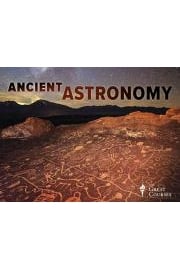The Remarkable Science of Ancient Astronomy is an enlightening documentary series that delves deep into the fascinating world of ancient astronomy. In season 1, episode 11, titled "Chinese and Other Non-Western Constellations," viewers are taken on a captivating journey to explore the celestial wonders discovered by ancient cultures beyond the Western world.
This enthralling episode focuses on the rich heritage of Chinese astronomy and the incredible non-Western constellations they developed. Throughout history, various ancient civilizations harbored a profound fascination with the night sky, seeking to unravel its secrets and establish a connection between earthly events and celestial bodies. Chinese astronomers, in particular, documented and interpreted the cosmos in a truly remarkable way, resulting in a unique system of constellations.
The episode commences by shedding light on the profound philosophical background that underpins Chinese astronomy. Drawing heavily from concepts such as Yin and Yang, the Chinese developed a holistic understanding of the universe, believing that all aspects of life are interconnected. This profound ideology directly influenced the way they observed and recorded the stars, giving rise to a system that was both scientifically rigorous and deeply rooted in their cultural beliefs.
As the episode unfolds, viewers are introduced to the numerous Chinese constellations, each with its own intriguing stories and legends. Through expert interviews and awe-inspiring animations, we witness how the Chinese associated certain constellations with animals, mythical creatures, and even historical figures, painting a vivid and captivating picture of the night sky.
Furthermore, this episode also explores non-Western constellations from other ancient civilizations, such as India, Africa, and the Indigenous cultures of the Americas. These cultures, too, developed their own intricate systems to map the heavens and identify patterns and shapes that held deep cultural and spiritual significance. By comparing and contrasting these various non-Western constellations, we gain a broader understanding of the different ways in which cultures around the world interpreted their view of the cosmos.
Throughout the episode, viewers are treated to stunning visuals of the night sky, showcasing the intricate patterns formed by the stars in the Chinese and non-Western constellations. The attention to detail and accuracy presented in the animations allows audiences to immerse themselves in the celestial wonders that ancient cultures observed and revered.
In addition to exploring the cultural aspects of these constellations, "Chinese and Other Non-Western Constellations" also delves into the scientific achievements of these ancient civilizations. Through innovative astronomical tools and sophisticated observation techniques, the Chinese made significant discoveries and predictions about celestial movements, planetary motions, and even eclipses. Their advancements were not only scientifically significant but also influenced later Western astronomers in their own explorations of the universe.
As the episode draws to a close, viewers are left with a profound appreciation for the remarkable science and cultural depth associated with Chinese and non-Western constellations. The stories and knowledge passed down through generations are a testament to the enduring human curiosity and our innate desire to uncover the mysteries of the universe.
In an era where Western astronomy dominates our understanding of the cosmos, "Chinese and Other Non-Western Constellations" serves as a reminder of the extraordinary achievements and perspectives of ancient cultures. It encourages us to take a step back, embrace diverse perspectives, and marvel at the remarkable science that has been shaping our understanding of the night sky for centuries.
-
Channel
-
First AiredJanuary 6, 2017
-
Content RatingTV-PG
-
Runtime29 min
-
LanguageEnglish

-
 Watch thousands of shows and movies
Watch thousands of shows and movies
-
 All the TV You Love
All the TV You Love
-
 Watch Anytime, Anywhere
Watch Anytime, Anywhere

 Watch thousands of shows and movies
Watch thousands of shows and movies
 All the TV You Love
All the TV You Love
 Watch Anytime, Anywhere
Watch Anytime, Anywhere